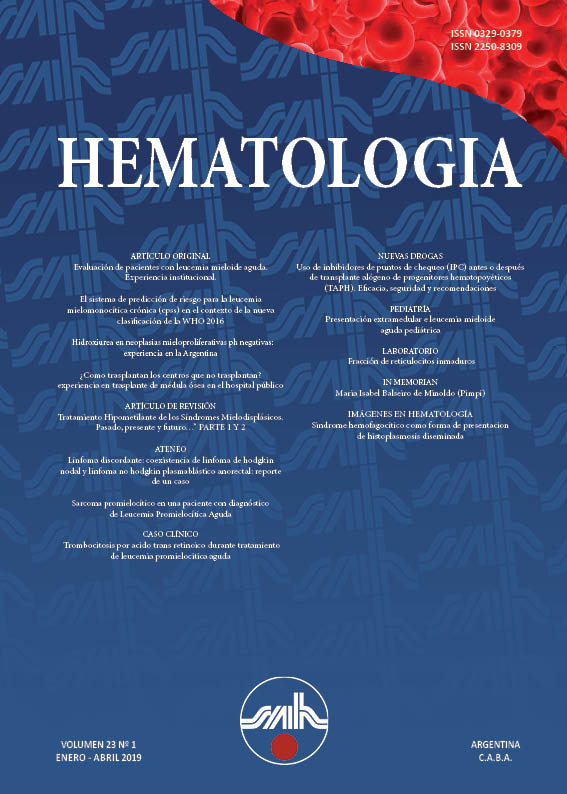Abstract
Discordant lymphomas are defined by the simultaneous presence of two different histological subtypes in at least two different anatomical sites.
This discordance can be observed more frequently between bone marrow and lymph nodes. We must
differentiate it from composite lymphoma, which is characterized by the simultaneous presence of two
subtypes of lymphomas in the same anatomical site.
The incidence of this entity is very low, with no more than 20 cases described in the current literature.
The hypothesis about its phisiopathology are the compromise of the host immune system, EBV
infection and previous chemotherapy. The treatment of choice should be the most effective for the subtype of greater aggressiveness.
We present the case of a 57-year-old man with supra and infradiagragmatic lymph node involvement, whose consultation reason was proctorrhagia caused by a rectal mass. The histopathological diagnosis of an axillary lymph node sample was mixed cellularity Hodgkin lymphoma, while the rectal mass resulted in the diagnosis of a plasmablastic non-Hodgkin lymphoma. We did not find any evidence of viral infection and the poor performance status of the patient complicated the therapeutic decision, so the evolution was aggressive.
It is important to consider this entity, since many cases could be underdiagnosed and related to a lack of response to treatment.
References
2. Zhang Ch, Yi Y, Chen Ch, Wang J, Liu Z. Discordant lymphoma consisting of mediastinal large B-cell lymphoma and nodular sclerosis Hodgkin lymphoma in the right supraclavicular lymph nodes: a case report. Diagnostic Pathology. 2015; 10:215.
3. Nishioka A, Ureshino H, Ando T y col. Three coexisting lymphomas in a single patient: composite lymphoma derived from a common germinal center B-cell precursor and unrelated discordant lymphoma. International Journal of Hematology. 2018; 107: 703-08.
All material published in the journal HEMATOLOGÍA (electronic and print version) is transferred to the Argentinean Society of Hematology. In accordance with the copyright Act (Act 11 723), a copyright transfer form will be sent to the authors of approved works, which has to be signed by all the authors before its publication. Authors should keep a copy of the original since the journal is not responsible for damages or losses of the material that was submitted. Authors should send an electronic version to the email: revista@sah.org.ar

